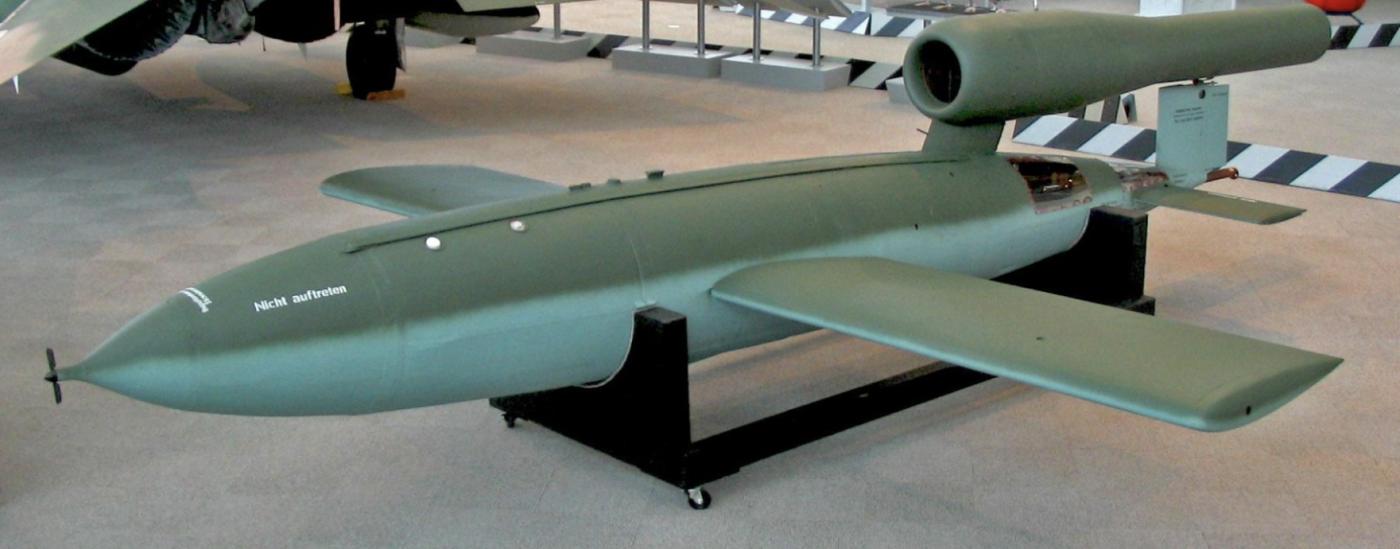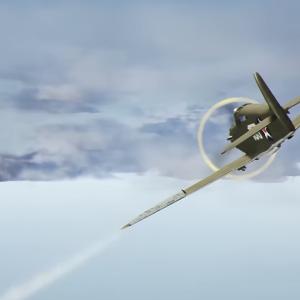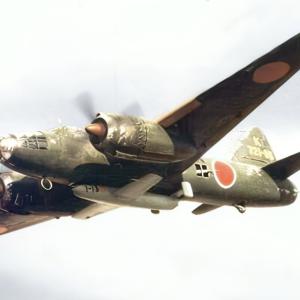
V-1 Flying Bomb “doodle bug”
The V-1 flying bomb, colloquially known as the "doodlebug" or "buzz bomb," was a pivotal and fearsome weapon developed by Nazi Germany during the Second World War. It holds the distinction of being the world’s first operational cruise missile and heralded a new era in long-range, unmanned warfare. Designed by the German Luftwaffe’s research division, the V-1 was developed primarily at the Peenemünde Army Research Center, under the guidance of engineers led by Robert Lusser from the Fieseler company. The airframe was produced by the aircraft manufacturer Fieseler, while the pulsejet engine, the distinctive component that gave the V-1 its characteristic buzzing sound, was developed by Argus Motoren under engineer Paul Schmidt.
The V-1 was powered by an Argus As 014 pulsejet engine mounted above the fuselage, which produced a repetitive burst of sound every second. This pulsing combustion gave rise to the nickname "buzz bomb." The engine was relatively simple and inexpensive to produce, consisting of few moving parts, which suited the mass-production strategy envisioned by the Nazi regime. The bomb measured approximately 8.3 meters (about 27 feet) in length, with a wingspan of 5.3 meters (17.5 feet), and it weighed around 2,150 kilograms (4,740 pounds) when loaded. It carried a high-explosive warhead weighing about 850 kilograms (1,870 pounds), making it capable of causing significant destruction in densely populated urban areas.
The V-1 was launched from a steam-powered catapult system mounted on an inclined ramp. These ramps were roughly 48 meters long and used a chemical reaction involving hydrogen peroxide and a catalyst to generate high-pressure steam that drove a piston. This piston propelled the V-1 forward at around 580 kilometers per hour (360 mph) until its pulsejet engine could ignite and sustain flight. The launch system was simple, effective, and quick to reload, allowing dozens of missiles to be launched in succession from a single site. In addition to ground-based ramps, later versions of the V-1 were launched from modified Heinkel He 111 bombers flying over the North Sea or the Netherlands, increasing their flexibility and operational reach, especially after fixed launch sites came under attack or were overrun.
Once airborne, the V-1 typically flew at a cruising altitude of between 600 and 900 meters (roughly 2,000 to 3,000 feet), high enough to avoid ground obstacles but still within range of Allied anti-aircraft defenses. Its cruising speed was around 640 to 650 kilometers per hour (400 mph), fast for the time but still interceptable by modern Allied fighter aircraft such as the Hawker Tempest, the Gloster Meteor jet, and late-war variants of the Spitfire and Mustang. The V-1 had an effective range of about 250 kilometers (160 miles), which allowed it to be launched from northern France, Belgium, or the Netherlands and still reach targets such as London, Antwerp, or Brussels. Navigation was guided by a crude but effective autopilot system using gyroscopes to maintain heading and a barometric altimeter to control altitude. Distance was measured by a small propeller in the nose connected to an air log; when it had spun a pre-set number of revolutions corresponding to the target range, the bomb's engine would cut out, and the missile would plunge to earth and explode.
Production of the V-1 began in earnest in 1943, and by the time Allied forces captured the remaining launch facilities in 1945, an estimated 30,000 V-1 bombs had been manufactured. Most of the early launches were carried out from permanent launch sites hidden in forests in the Pas-de-Calais region of northern France, chosen for their proximity to southern England. Later in the war, as the Allies advanced across western Europe, German forces relocated launch operations to the Netherlands and western Germany, even experimenting with mobile launching systems, although these were less reliable and harder to conceal.
The first V-1 was launched against London on June 13, 1944, just a week after the Allied landings in Normandy. Over the subsequent months, thousands of V-1s were fired at Britain, with London bearing the brunt of the assault. At the peak of the campaign, more than one hundred bombs were launched per day. The distinctive buzzing of the engine struck terror in the hearts of civilians, as it was widely known that once the sound stopped, the bomb was about to fall. Although the weapon lacked pinpoint accuracy, it was capable of striking within the general area of its intended target, which, for its intended purpose as a psychological weapon of terror, was more than sufficient. Entire neighborhoods in London and other cities were damaged or destroyed. The psychological toll was immense, and the continuous threat strained civil defense services already pushed to their limits.
Despite its innovation, the V-1 was vulnerable to interception. British anti-aircraft defenses evolved quickly to meet the challenge, aided by radar tracking and the deployment of faster aircraft. Fighter pilots, in an extraordinary display of skill, even learned to tip the V-1s off course by nudging their wings with their own to destabilize the missile's gyros. Anti-aircraft guns and barrage balloons also played a major role in countering the threat. By the end of the campaign, over half of the V-1s launched against Britain were destroyed before reaching their targets.
A significant portion of V-1 production was carried out under grim conditions, using forced labor in Nazi concentration camps and underground factories. The Mittelwerk facility in central Germany, staffed by prisoners from the Dora-Mittelbau camp, was one of the main manufacturing centers for the V-1 and its successor, the more advanced V-2 rocket. Thousands of laborers died under brutal conditions, a tragic and often overlooked aspect of the V-weapons program that underscores the inhumanity at the heart of its engineering achievements.
As the war neared its end, the use of V-1 flying bombs declined sharply. Allied bombing raids and ground advances eliminated most of the operational launch sites, and the Germans could no longer sustain large-scale V-1 production or deployment. Nevertheless, the legacy of the V-1 flying bomb endured long after the end of hostilities. It was the prototype for a new kind of warfare—remote, automated, and capable of delivering destruction over long distances without risking the lives of a crew. Its technological concepts laid the groundwork for future cruise missiles and drone weaponry, and both the United States and the Soviet Union studied captured V-1s and the personnel who had worked on them to fuel their own Cold War-era weapons programs.
The V-1 flying bomb, with its chilling buzz and sudden, explosive silence, was a crude yet effective precursor to modern guided missiles. Designed as a weapon of terror as much as one of tactical value, it symbolized both the desperate ingenuity of a regime in decline and the dawning of a new technological age in global conflict.










